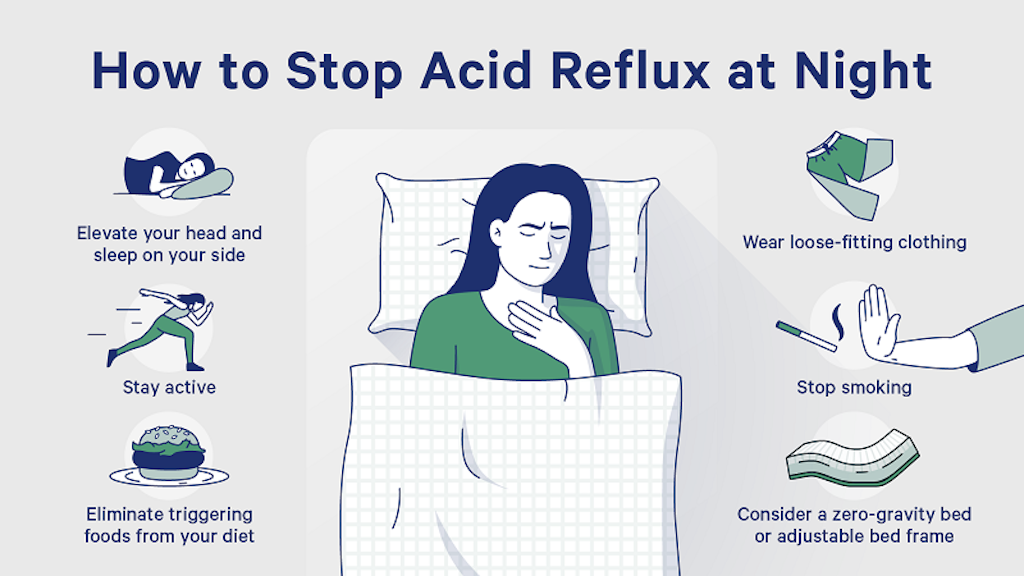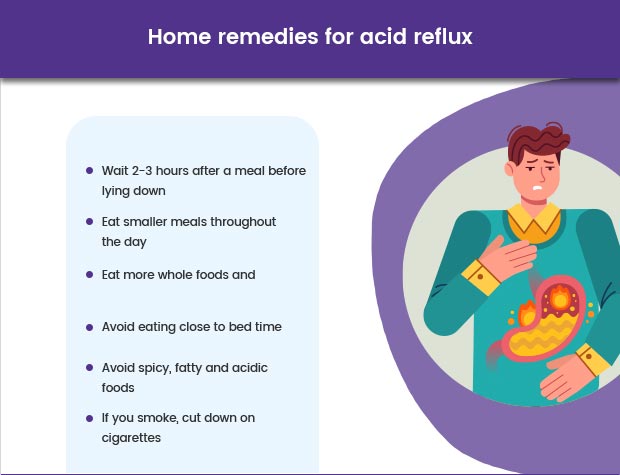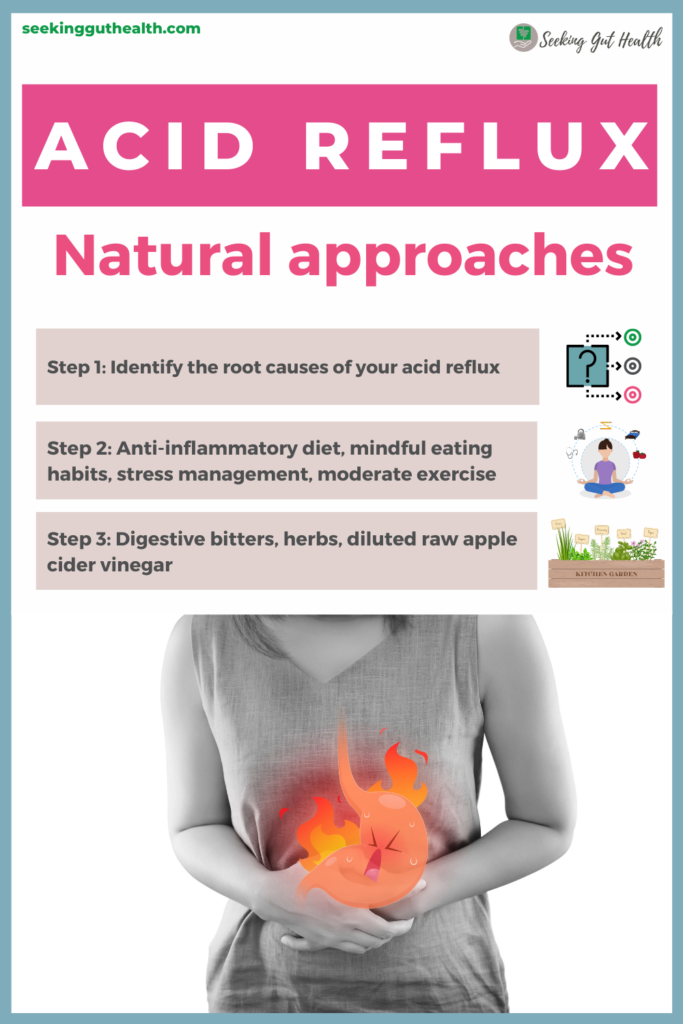Discover the ultimate guide to easing acid reflux with these 5 simple steps that will have you feeling better fast.
Table of Contents
- Introduction: Understanding Acid Reflux
- Know Your Food Triggers
- Section 2: Tame the Flame of Acid Reflux with Diet
- Section: Get Moving and Improve Your Digestion
- Section 4: Watch the Clock—Timings Matter
- Section 5: Dress Comfortably for Digestive Success
- Section 6: Stay Upright and Help Your Tummy
- Section 7: Get Plant Power on Your Side
- When to Chat with Your Doctor
- Conclusion: Putting It All Together
- FAQs
Introduction: Understanding Acid Reflux
Acid reflux is a common tummy trouble that many people, including kids, experience. It happens when the acid in your stomach makes its way back up into your esophagus, which is the tube connecting your mouth to your stomach. This backward flow of acid can irritate the lining of your esophagus, causing discomfort or a burning sensation in your chest or throat.
People who experience acid reflux might feel a bit like there’s a small amount of hot, acidic liquid moving up from their stomach into their throat. This sensation is commonly known as heartburn. It can happen after eating certain foods, lying down, or even during the night, causing discomfort and disruption to daily activities.
When acid reflux occurs repeatedly or is severe, it can be a sign of a more serious condition called Gastroesophageal Reflux Disease (GERD). This condition might need special treatment and monitoring by a doctor to help manage the symptoms effectively.
Know Your Food Triggers
When it comes to dealing with acid reflux, one of the first steps is to understand the foods that can trigger this uncomfortable condition. Certain foods can cause the muscle at the end of your esophagus to relax, allowing stomach acid to flow back up. By knowing your food triggers, you can make smart choices to avoid this unpleasant experience.
Food Diary
One of the best ways to identify your food triggers is by keeping a food diary. This involves writing down everything you eat and drink throughout the day and noting any symptoms of acid reflux you experience. By looking back at your food diary, you can see patterns and pinpoint the specific foods that may be causing your discomfort. This can help you make informed decisions about what to include or exclude from your diet to prevent acid reflux from acting up.
Section 2: Tame the Flame of Acid Reflux with Diet
Dealing with acid reflux can be bothersome, but making some simple dietary changes can help tame the flame and ease the discomfort. By being mindful of what you eat, you can find relief from heartburn and other acid reflux symptoms.

Image courtesy of casper.com via Google Images
Friendly Foods
Some foods are less likely to trigger acid reflux and are considered safe for consumption. These include oatmeal, bananas, melons, whole grain bread, green vegetables, lean meats like turkey and chicken, and fish.
Foods to Avoid
Unfortunately, there are certain foods that can aggravate acid reflux and should be avoided. These include spicy foods, citrus fruits and juices, tomatoes and tomato-based products, chocolate, mint, garlic, onions, and fatty or fried foods. It’s best to steer clear of these if you’re looking to keep heartburn at bay.
Section: Get Moving and Improve Your Digestion
When dealing with acid reflux, making simple lifestyle adjustments can play a crucial role in managing the symptoms. One effective way to improve digestion and reduce acid reflux is by incorporating regular physical activity into your daily routine. Exercise not only helps in maintaining a healthy weight, but it also aids in better digestion, which can alleviate acid reflux.
Fun Exercises
For kids like you, engaging in fun physical activities can be enjoyable while also benefiting your digestive health. Activities like bike riding, swimming, playing tag, or dancing can be great options to get moving. These exercises are low-impact and can help keep your digestive system working efficiently without triggering acid reflux symptoms.
Section 4: Watch the Clock—Timings Matter
In addition to watching what you eat, it’s also important to pay attention to when you eat and how your sleep schedule can impact your acid reflux. Let’s explore how timings matter when it comes to managing this condition.

Image courtesy of www.healthexpress.co.uk via Google Images
Best Times to Eat
Believe it or not, the timing of your meals and snacks can play a role in how you feel if you have acid reflux. Try to have your meals at regular times each day and avoid eating too close to when you go to bed. Eating late at night can worsen symptoms for many people, so it’s best to give your body plenty of time to digest before lying down.
Pre-Bedtime No-Eat Zone
It’s recommended to wait at least 2-3 hours after eating before lying down or going to bed. This helps prevent stomach acid from flowing back into your esophagus while you’re horizontal, which can lead to heartburn and discomfort. Giving your body time to digest your last meal before hitting the sack can make a big difference in how you feel the next day.
Section 5: Dress Comfortably for Digestive Success
When it comes to managing acid reflux and ensuring digestive comfort, what you wear can make a big difference. Certain clothing choices can either alleviate or exacerbate your symptoms. Let’s dive into how dressing comfortably can contribute to your digestive success.
Choosing the Right Clothes
Opting for loose-fitting attire can help prevent unnecessary pressure on your stomach, reducing the likelihood of acid reflux flare-ups. Avoid tight belts, waistbands, or constricting garments that can compress your abdomen and push stomach acid up into your esophagus. Instead, select clothing made from soft, breathable fabrics that allow for ease of movement and optimal comfort.
Section 6: Stay Upright and Help Your Tummy
In addition to watching what you eat and how you move, another important factor in keeping acid reflux at bay is your posture! Yes, that’s right, how you sit or stand can affect how you feel, especially after eating. Let’s explore some simple tips to help you stay upright and keep your tummy happy.
| Step Number | Step |
|---|---|
| 1 | Eat smaller, more frequent meals |
| 2 | Avoid trigger foods – spicy, acidic, or fatty foods |
| 3 | Avoid lying down right after eating |
| 4 | Elevate your head while sleeping |
| 5 | Try over-the-counter antacids or other remedies |

Image courtesy of www.pinterest.com via Google Images
Good Postures
After a meal, try to avoid slouching or lying down immediately. Instead, focus on staying upright for at least 2-3 hours after eating. This allows gravity to do its job and helps prevent stomach acid from moving back up into your esophagus, giving you heartburn or reflux.
When sitting, make sure your back is straight and supported by a chair. Avoid crossing your legs or hunching over – this can put pressure on your stomach and lead to discomfort. If standing, keep your shoulders back and chin up to promote good digestion and prevent acid from creeping up.
Section 7: Get Plant Power on Your Side
When it comes to soothing acid reflux naturally, plants can be your best friends. Let’s explore some herbs that have been known to provide relief and help with digestion.
Safe Herbs
If you’re looking to calm the fire of acid reflux, consider adding these safe and gentle herbs to your diet:
- Peppermint: Known for its cooling effect, peppermint can help soothe the lining of the esophagus and stomach.
- Ginger: This spicy root can aid digestion and reduce inflammation in the gastrointestinal tract.
- Chamomile: With its calming properties, chamomile can relax the muscles in the digestive system and ease irritation.
By incorporating these herbs into your meals or enjoying them as teas, you may find relief from acid reflux symptoms. Always consult with a parent or guardian before trying new herbs or supplements to ensure they are safe for you.
When to Chat with Your Doctor
While making adjustments to your diet and lifestyle can help manage acid reflux for many people, there are times when it’s crucial to seek advice from a doctor. Here are some signs that indicate you should schedule a chat with your healthcare provider:

Image courtesy of seekingguthealth.com via Google Images
Signs to Watch For
If you experience frequent and severe heartburn despite making dietary changes and lifestyle adjustments, it may be a sign of a more serious condition called gastroesophageal reflux disease (GERD). GERD can lead to complications if left untreated, so it’s essential to seek medical attention if you notice any of the following symptoms:
– Persistent heartburn that doesn’t improve with over-the-counter medications
– Difficulty swallowing or a feeling of food getting stuck in your throat
– Chest pain that radiates to your arms, neck, jaw, or back
– Unexplained weight loss
– Chronic cough, hoarseness, or sore throat
Remember, your doctor can provide you with a proper diagnosis and recommend the most effective treatment plan based on your individual needs. Don’t hesitate to reach out if you have concerns about your acid reflux symptoms.
Conclusion: Putting It All Together
In order to ease acid reflux and feel better, you can take simple steps to make positive changes in your diet, lifestyle, and habits. Remember, small changes can make a big difference in how you feel. Let’s summarize the key points.
Heartburn Relief
First, it’s important to identify the triggers for your acid reflux, whether it’s certain foods or eating habits. By keeping a food diary, you can figure out what to avoid to prevent heartburn.
Lifestyle Adjustments
Secondly, making lifestyle adjustments like watching when you eat, how you dress, and your posture can significantly improve your acid reflux symptoms. Remember to choose comfortable clothing, stay upright after eating, and pay attention to when you eat your meals.
GERD Treatment
If your acid reflux symptoms persist or worsen, it may be time to chat with your doctor. Be on the lookout for signs that may indicate a need for medical intervention. Your healthcare provider can help guide you on further treatment options.
By incorporating these heartburn relief strategies, lifestyle adjustments, and seeking the right treatment when needed, you can successfully manage your acid reflux and lead a more comfortable life. So, start making these changes today and say goodbye to those uncomfortable acid reflux symptoms!
FAQs
Why does my chest hurt after I eat pizza sometimes?
After eating pizza, your chest might hurt because some foods, like pizza, can cause acid from your stomach to come up your throat, which creates a burning feeling. This is called acid reflux.
Can I still eat my favorite foods if I have acid reflux?
If you have acid reflux, you can still enjoy your favorite foods in moderation. It’s important to find a balance and make good food choices that can help you enjoy your favorites with less reflux. Keeping a food diary can help you track which foods trigger your symptoms, allowing you to make better choices without completely eliminating the foods you love.
Will I always have acid reflux?
While it might feel like you’ll always have acid reflux, the good news is that it is manageable. Many people find relief from their acid reflux symptoms by making the right lifestyle adjustments, dietary changes, and by using natural remedies. Over time, as you adopt these helpful habits and strategies, you may find that your acid reflux improves and becomes less of a bother.





